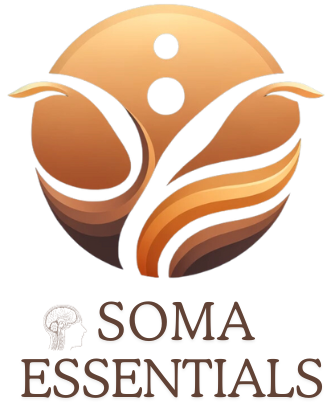A Beginner’s Guide to Understanding Pilates
Welcome to our beginner’s guide to understanding Pilates! If you’re looking to improve your overall physical and mental well-being, then Pilates is the perfect exercise for you. This low-impact form of exercise focuses on strengthening the body’s core muscles, improving flexibility, and promoting mindfulness. In this article, we will explore the history and benefits of Pilates, as well as different types of somatic exercises that can be incorporated into your Pilates routine. So, whether you’re a fitness enthusiast or just starting your fitness journey, let’s dive into the world of Pilates and discover how it can transform your mind and body.
First, let’s start by understanding what Pilates is all about. Developed by Joseph Pilates in the early 20th century, Pilates is a series of exercises that aim to improve core strength, flexibility, and overall body awareness. It combines elements of yoga, martial arts, and Western forms of exercise to create a unique mind-body workout.
As we dive deeper into the world of Pilates, we will explore its connection to soma essentials – a term used to describe the body’s natural ability to heal itself. This concept is based on the idea that our bodies are capable of self-regulation and self-healing, and Pilates helps to enhance this process. By focusing on proper alignment, breathing, and mindful movement, Pilates can tap into the body’s innate healing abilities.
We will also discuss somatic therapy, which uses movement and touch to promote healing and well-being. This form of therapy takes a holistic approach, addressing both physical and emotional well-being. Through gentle movements and hands-on techniques, somatic therapy can help release tension and trauma stored in the body, leading to improved physical function and emotional balance.
Lastly, we will touch upon somatic psychology, which focuses on the mind-body connection and how it can help with body awareness and self-discovery. This branch of psychology emphasizes the importance of understanding the connection between our thoughts, emotions, and physical sensations. By becoming more aware of our bodies and how they respond to our thoughts and emotions, we can gain insight into our patterns of behavior and make positive changes.
Welcome to the world of Pilates, where the mind-body connection is at the core of every exercise. Whether you are new to Pilates or looking to deepen your understanding, this article has provided you with valuable information on the various aspects of this practice. By incorporating Pilates into your routine, you can improve your physical and emotional well-being and embark on a journey of self-discovery.
Somatic Therapy: Healing Through Movement
In this section, we will delve into the world of somatic therapy and how it can be beneficial for those looking to improve their physical and emotional well-being. Somatic therapy is a form of therapy that focuses on the connection between the mind and body, using movement as a way to heal both physical and emotional issues.
Through somatic therapy, individuals are able to release tension, trauma, and stress that may be stored in their bodies. This can be done through various somatic movement techniques, such as Pilates, which help to increase body awareness, improve alignment, and release any holding patterns that may be causing discomfort or pain.
The principles of somatic movement revolve around the understanding that the body holds onto emotions and experiences, and by releasing them through movement, individuals can experience physical and emotional healing. By connecting the mind and body through movement, somatic therapy can help individuals to become more in tune with their bodies and emotions, leading to overall well-being.
Somatic Psychology: Understanding the Mind-Body Connection
In this section, we will explore the field of somatic psychology and how it can help with body awareness and self-discovery. Somatic psychology is a branch of psychology that focuses on the connection between the mind and body, and how our physical experiences impact our emotional and mental well-being.
Through the practice of Pilates, we can begin to understand and tap into this mind-body connection. By engaging in controlled movements and focusing on our breath, we can become more aware of our bodies and how they respond to different stimuli. This can lead to a greater understanding of our emotions and thought patterns.
One of the key principles of somatic psychology is the idea that our bodies hold onto past traumas and experiences. Through Pilates, we can release tension and work through these stored emotions, leading to a greater sense of well-being.
Another principle is the concept of embodiment, which refers to the experience of being fully present in our bodies. This is an essential aspect of Pilates, as it encourages us to be mindful of our movements and sensations.
Overall, somatic psychology offers a valuable framework for understanding the mind-body connection within the context of Pilates. By incorporating these principles into our practice, we can deepen our understanding and experience even greater benefits from this form of exercise.
Soma Essentials: The Key to Pilates
Pilates is more than just a physical exercise – it is a mind-body practice that focuses on the connection between the two. At the core of this practice lies the concept of soma essentials, which refers to the fundamental principles that guide Pilates movements and techniques. These essentials include concentration, control, centering, flow, precision, and breathing.
Through the use of these soma essentials, Pilates helps individuals improve their mind-body connection by bringing awareness to their movements and breathing patterns. This not only enhances physical strength and flexibility, but also cultivates mental focus and emotional well-being.
For example, the principle of concentration encourages individuals to focus on each movement with full attention and intention. This allows for a deeper understanding of how their body moves and functions, leading to improved coordination and control.
Similarly, the principle of centering emphasizes the importance of engaging the core muscles in all movements. This not only strengthens the core, but also helps individuals find a sense of balance and stability within their body.
Incorporating these soma essentials into Pilates can also have positive effects on one’s overall well-being. By bringing attention to their body and breath, individuals can let go of stress and tension, leading to a calmer and more relaxed state of mind.
In conclusion, soma essentials are an integral part of Pilates and its connection to mind-body wellness. By incorporating these principles into your practice, you can experience the full benefits of Pilates and improve your physical, mental, and emotional well-being.
In conclusion, Pilates is not just a form of exercise – it is a lifestyle that promotes overall well-being. By incorporating elements of soma essentials, somatic therapy, and somatic psychology, Pilates offers a holistic approach to physical and emotional health. Whether you are looking to improve your mind-body connection or simply want to lead a healthier lifestyle, Pilates is an excellent choice for people of all ages and fitness levels.

